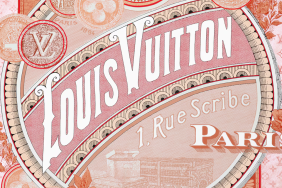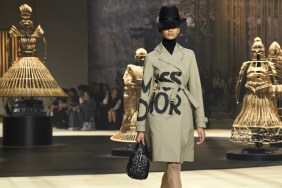By Samantha Critchell
Art Deco jewelry flourished in the early part of the 20th century because its graphic looks and geometric lines made sense to the public at large. Almost 100 years later, the style endures in both sought-after retro pieces and as inspiration for new collections.
“It’s all about lines, and people can relate to that,” says Judith Price, president of the National Jewelry Institute. “Perhaps people couldn’t relate to the fussiness of Art Nouveau or the Edwardian buttons and bows, but they understand Deco.”
The roots of Art Deco were formed in the late 1800’s but it is now largely defined as the period between the two world wars. It was as prevalent in architecture as it was jewelry–Rockefeller Center, the Chrysler Building and even the Empire State Building are all Deco style–and, in fact, the tall rectangular windows as well as the long elevator lines used in these structures seem to be replicated by precious stones.

“The Deco style influences the way we see things today–how our eye is trained,” Price says.
In her book “Masterpieces of French Jewelry,” Price explains that new jewelers’ tools became available at the same time the skyscrapers were going up, allowing hard diamonds to be cut into four-corner shapes with angled edges now known as the emerald-cut. Jewelers then began mixing stone shapes on the same piece: an emerald-cut here, a round-cut there, maybe toss in a baguette.
“Deco is gutsy, architectural and part of society,” says Price.
The look also complemented the change in women’s clothing, moving out of restrictive and elaborate dresses into work-friendly skirt suits from Coco Chanel and Paul Poiret. Many Deco pieces also incorporate black onyx–especially striking when set against platinum and diamonds–that was a natural match for eveningwear often made from a shiny lame.
Cartier was making Deco-style jewelry before it even had a name thanks to the house’s understanding that jewelry was an “extension of the body’s movement, that it should enhance the body of a woman,” says president and CEO of Cartier North America Frederic de Narp.
At first, says de Narp, the favorite Deco pieces were tiaras and brooches, but bracelets eventually largely became a signature piece of the era. Remember, it’s really the first time that women were showing bare arms in public.

“Deco pieces aren’t always big pieces but they still can make a statement,” says New York-based estate jeweler Camilla Dietz Bergeron. “They give you a little sparkle. They’re a little `hello,’ not a big shout.”
Her customers are most interested in clips worn on jacket lapels and bracelets. They’d love to have earrings but many didn’t survive the test of time because they were fragile, long, thin drop earrings, she says, while brooches are probably the easiest to find.
She separates the two sub-schools of Deco:
–Classic is almost exclusively diamond and platinum with an emphasis on intricate designs using small stones.
–Modern might mix white or even touches of yellow gold in very geometric shapes. Not as many stones are used, but the pieces that do use stone might experiment with coral or lapis as well as more traditional diamonds, sapphires and emeralds.

Cartier’s de Narp says Deco continues to be an inspiration. The new Hypnose collection, launched at Art Basel in Miami, builds upon black and white graphics, oval shapes and the use of platinum and white gold. “It’s extremely modern and timeless at the same time – and people want simple and timeless.”
He describes the broader appeal of Deco: “It’s abstract but it’s concrete. It’s complicated geometrics but it’s easy to understand. It’s a clear vision, not frou frou.”
“Everyone still copies it,” Price adds. You’ll see “updates,” but jewelers don’t want to divorce themselves completely from the look, she says.
Greg Kwiat, of jeweler Kwiat Inc., says the long-lasting and permeating success of Deco would be hard to replicate now because there simply are too many distractions. In the 1920s and ’30s there was a consistent design message across many mediums, a phenomenon rare – if nonexistent – today.
Yet the appeal of Deco still runs deep.

For its 100th anniversary, Kwiat revamped a favorite piece from its archive – a brooch designed by his grandfather for his grandmother. It was redone with pink gold and pink sapphires yet the style was true to its roots with the mixing of shapes, layers and textures.
It did very well, he reports.
“Everyone can put their own spin on it,” adds Kwiat director of design Janice DeBell. “The jewelry has life and texture and movement, and all of the pieces are very wearable.”
Images courtesy of the Fashion Spot forums.








